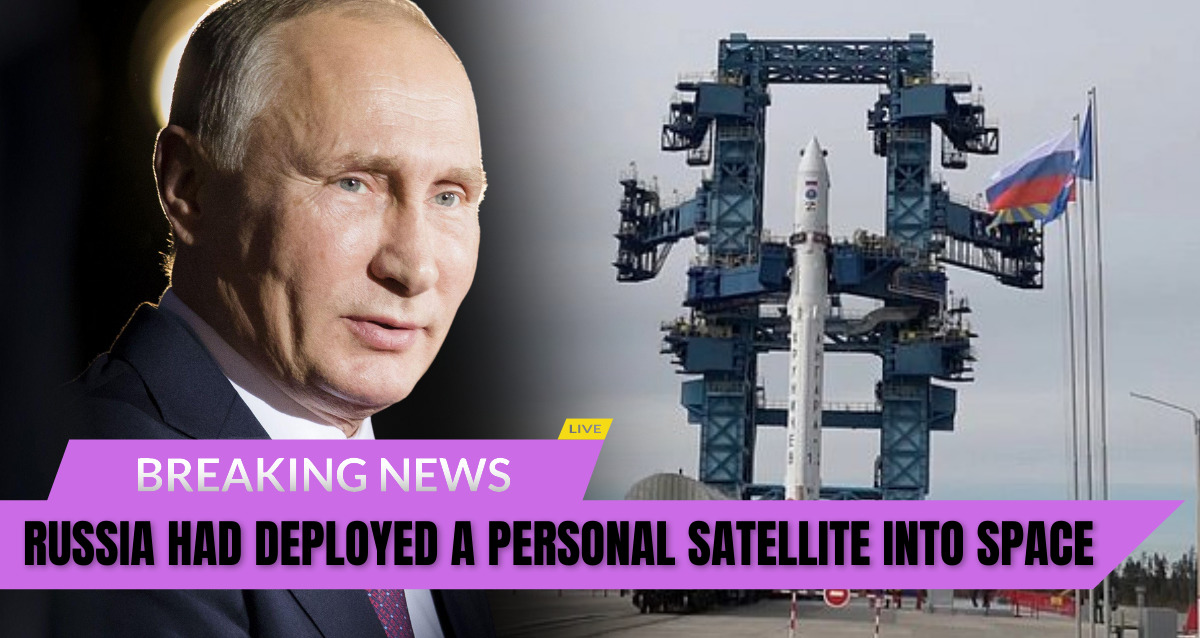A secret military spacecraft was put into orbit around the Earth by Kremlin space officials. They used Russia’s new Angara 1.2 rocket to get it there. During the launch, which took place on April 29, the rocket was launched from the Plesetsk Cosmodrome in Mirny, north-western Russia. In a statement, the Russian Ministry of Defense said that a space “combat crew” had launched an unknown payload for them. If it was a top-secret new military radar satellite system, it was likely to be used in the Ukraine war.
At night, video shows the rocket speeding through the sky from a place that isn’t very well-known. Russia’s Ministry of Defense said in a statement on April 30 that the crew of a spacecraft launched from the Plesetsk Cosmodrome in Arkhangelsk. The Angara-1.2 light-class launch vehicle and spacecraft were launched for the Russian Ministry of Defense, the MoD said in the statement.

This is how it worked: ‘The rocket was launched, and the spacecraft was launched into its planned orbit’ A few minutes after the launch, the Angara-1.2 launch vehicle was given permission to be escorted by ground controllers from the Titov Main Test and Space Systems Control Center. Kosmos 2555 was the name of the spacecraft after it successfully launched. The payload is unknown, but it has the same parameters as two military imaging satellites that were launched in 2018 and 2021, known as EMKA-1 and EMKA-2. This suggests that it is also an imaging satellite.
Stable communication was set up and kept up with the spacecraft, and its onboard systems are running in normal mode, the statement said. Space Control Center officers entered the spacecraft’s information into the Main Catalogue of Space Objects of Russia’s Space Control System. They then began to analyse and process information about the new space object in order to accept it for tracking by ground facilities of Russia’s Main Space Intelligence Center.
At the same time, more than 30 ground-based measuring instruments and more than 50 combat crews from the 15th Aerospace Forces Army (Special Purpose) were used to make sure that the spacecraft of the Russian Ministry of Defense was launched on time. The Plesetsk Cosmodrome, which was built in 1957, is a special military site. It was built to test the R-7 intercontinental ballistic missile.
 Cosmodrome has been used to launch the R-7-based Soyuz, the Cosmos-3M, Rokot and Tsyklon, as well as Angara, since it was first built. Cosmodrome: The USSR didn’t officially say that it existed until 1983 because it was a secret place.
Cosmodrome has been used to launch the R-7-based Soyuz, the Cosmos-3M, Rokot and Tsyklon, as well as Angara, since it was first built. Cosmodrome: The USSR didn’t officially say that it existed until 1983 because it was a secret place.
Following a suborbital test flight to make sure everything worked, and three test flights of the Angara-A5 variant to see how well it could launch payloads into space, this was the first time Angara 1.2 was used in a real way. To put 8,400 pounds (3,800 kg) into low-Earth orbit, the Angara 1.2 can only send 3,800 pounds. The more powerful Angara A5 can put 7.5 tonnes into low-Earth orbit (16,500 lbs). First of three Angara launches planned for 2022: one for Roscosmos, the Russian state space agency, and one for South Korea. This is the first of three planned launches.
A few days ago, Roscosmos said it was leaving the space station. The International Space Station is jointly run by Moscow and the United States. A complete Russian withdrawal from the station is expected to cause major problems for the operation, because Russian rockets deliver most of the cargo needed to keep the space station running.
However, in recent years, NASA has worked with private businesses, such as SpaceX, to deliver cargo and send people into space. This could help them lessen their dependence on Russia. The Russian space agency hasn’t said when it will stop working, but it has said that it will stick to the one-year notice period that was agreed upon.












